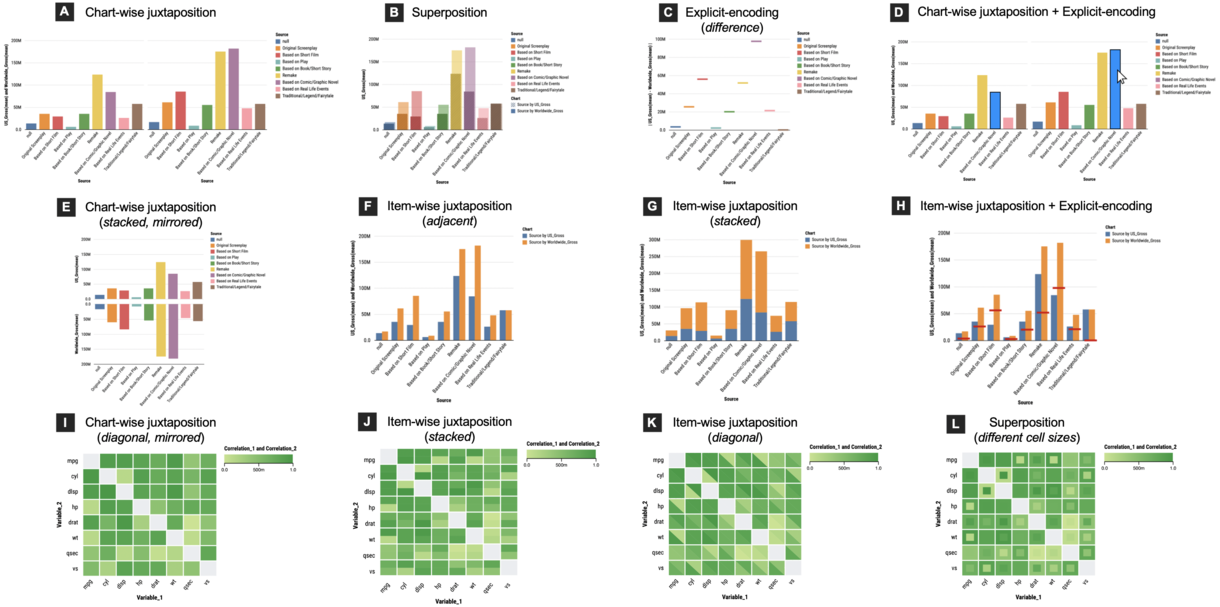

- Sehi L'Yi, Harvard Medical School
- Jaemin Jo, Sungkyunkwan University
- Jinwook Seo, Seoul National University
We present a systematic review on three comparative layouts—juxtaposition, superposition, and explicit-encoding—which are information visualization (InfoVis) layouts designed to support comparison tasks. For the last decade, these layouts have served as fundamental idioms in designing many visualization systems. However, we found that the layouts have been used with inconsistent terms and confusion, and the lessons from previous studies are fragmented. The goal of our research is to distill the results from previous studies into a consistent and reusable framework. We review 127 research papers, including 15 papers with quantitative user studies, which employed comparative layouts. We first alleviate the ambiguous boundaries in the design space of comparative layouts by suggesting lucid terminology (e.g., chart-wise and item-wise juxtaposition). We then identify the diverse aspects of comparative layouts, such as the advantages and concerns of using each layout in the real-world scenarios and researchers’ approaches to overcome the concerns. Building our knowledge on top of the initial insights gained from the Gleicher et al.’s survey [19], we elaborate on relevant empirical evidence that we distilled from our survey (e.g., the actual effectiveness of the layouts in different study settings) and identify novel facets that the original work did not cover (e.g., the familiarity of the layouts to people). Finally, we show the consistent and contradictory results on the performance of comparative layouts and offer practical implications for using the layouts by suggesting trade-offs and seven actionable guidelines.
An online gallery for exploring the design space of comparative layouts using a declarative grammar.
- GitHub: https://github.com/sehilyi/comparative-layout-explorer
- Demo: https://sehilyi.github.io/comparative-layout-explorer/